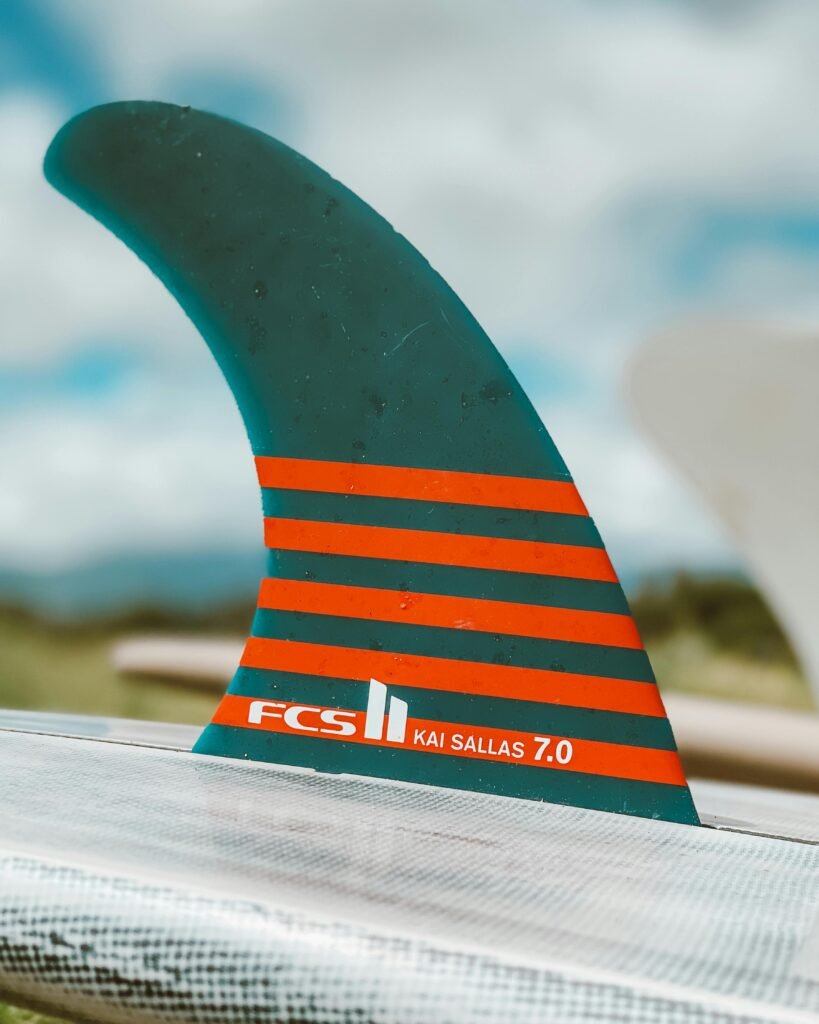Understanding Surfboard Fin: Types and Their Purpose
Surfboard fin play a crucial role in defining a surfboard’s performance in the water. They not only aid in tracking and stability but also contribute to speed and maneuverability. Different fin configurations cater to various surfing styles and conditions, making it essential for surfers to understand the types of fins available.
The most common types of surfboard fins include single fins, thrusters, quads, and fish fins. Single fins, typically larger and positioned at the tail of the board, promote stability and a smoother ride, ideal for cruising and noseriding. Their design suits longboards or retro-inspired boards, where glide and flow are prioritized. In contrast, thruster fins, consisting of three fins arranged in a tri-fin setup, offer a balanced combination of speed, control, and maneuverability. This configuration is widely favored by modern shortboard surfers who require versatility for various surf conditions.
Quad fins feature four fins that enhance speed and provide more acceleration in small waves, making them suitable for powerful turns and snappy performance. Fish fins, designed for fish-shaped surfboards, are often wider and developed to enhance paddle speed and provide exceptional maneuverability in a range of conditions. The unique outline of fish fins allows for quick direction changes, catering perfectly to smaller, punchy waves.
Environmental conditions such as wave size and steepness significantly influence fin selection. For example, larger waves may necessitate stiffer fins for better control, while smaller waves could benefit from more flexible options to generate speed. A solid understanding of surfboard fin types and their consequences on performance allows surfers of all skill levels to enhance their experience on the water.

How to Choose the Right Surfboard Fin for Your Needs
Selecting the appropriate surfboard fin is essential for optimizing your performance on the waves. Factors such as skill level, surfing style, and wave types significantly influence the choice of fins. Beginners might benefit from larger, more stable fins that offer greater control, whereas advanced surfers often prefer smaller fins that allow for faster maneuverability. Understanding your personal proficiency is the first step in determining the right surfboard fin.
Your surfing style is another crucial aspect. For instance, if you enjoy riding powerful, steep waves, then a fins setup with thruster or quad fins can provide better drive and hold. On the other hand, surfers who favor more playful, freestyle maneuvers in smaller, softer waves might opt for a twin fin or a fin with a flex pattern that allows for more agility and quick turning capabilities. Additionally, consider the type of waves you typically ride. The fin’s characteristics, such as size and shape, should complement the wave conditions you often encounter.
The size of the fin plays a vital role in performance. Larger fins generally offer increased stability and control, making them suitable for heavier surfers or those carving on steeper waves. Meanwhile, smaller fins enable more speed and quick transitions, favored by lighter surfers or high-performance boards. The material of the fin, whether fiberglass, plastic, or carbon, can also affect flex and responsiveness, further tailoring the setup to your specific needs.
Finally, experiment with various fin templates to discover what works best for you. Each fin design impacts your surfing dynamics differently. Visiting reputable surf shops to access fin buying guides and expert consultations is advisable. They can provide invaluable insights into which fins are the best match for your surfboard shape, ultimately helping enhance your surfing experience.

Fin Setups: Understanding FCS vs. Future Fin Systems
In the world of surfing, the fin setup is a crucial factor affecting performance and maneuverability on the waves. Two of the most prominent fin systems are the Fin Control System (FCS) and Future fins. Each has its own unique characteristics, advantages, and disadvantages that appeal to different types of surfers and preferences.
The FCS system is known for its versatility and ease of installation. One of its primary advantages is the ability for surfers to swap out fins quickly, allowing for a high degree of customization based on the surf conditions and personal paddling style. The FCS system utilizes a keyed box that locks the fins into place. Many users appreciate this feature because it enables them to experiment with a variety of fin shapes and sizes without significant effort. Additionally, FCS fins can be found in a wide range of options, varying in stiffness, size, and design, thus catering to surfers of differing skill levels and preferences.
On the other hand, the Future fin system provides a more robust attachment, often cited as its key advantage. Future fins employ a single tab insertion with deep boxes, securing the fins in place to minimize movement during heavy rides. This system is favored for its stability and consistent performance in various wave conditions. However, the Future system has a slight drawback: the process of changing fins can be more complicated compared to FCS. Some surfers find this to be a limitation, particularly when they want to adjust their setup quickly while at the beach.
Both fin setups have their proponents, with enthusiasts of FCS praising the customization options and ease of use, while those who prefer Future fins highlight their security and performance stability. Ultimately, the choice between FCS and Future fins will depend on individual preferences and surfing styles. Those interested in exploring these options further can visit the respective manufacturers: FCS and Future Fins.

Maintaining Your Surfboard Fin: Tips for Long-Lasting Performance
Maintaining the fins of your surfboard is essential for ensuring their longevity and optimum performance in the water. Proper care not only enhances the handling capabilities of your board but also contributes significantly to your overall surfing experience. Here are some practical tips for maintaining your surfboard fins.
Firstly, regular cleaning is crucial. After each surf session, rinse your fins with fresh water to remove salt, sand, and debris. This simple step helps prevent corrosion and buildup that can impair performance. For a more thorough clean, use a soft brush to scrub through any stubborn grime that may have accumulated. It is advisable to dry the fins completely before storage to deter any moisture-related damage.
Checking for damage on your fins should be a routine part of your maintenance regimen. Inspect them for cracks, chips, or warping that may affect their efficiency in the water. If you identify any issues, consider replacing the damaged fins before your next surf session. Additionally, ensure that the fin boxes on your board are in good condition, as a faulty box can lead to fin instability and reduced performance.
When it comes to storage, it is vital to keep your fins in a safe environment to prevent warping or breaking. Store them in a padded fin bag, ideally in a cool, dry location away from direct sunlight. Avoid placing heavy objects on top of your fins, as they can easily become misshapen if subjected to pressure. Following these best practices will help you maintain your surfboard fins effectively and ensure they deliver the performance you need.
For those seeking additional insights on surfboard care and maintenance, resources such as surfboard repair guides and expert articles can provide valuable information. Proper maintenance of your fins is not just about durability; it directly impacts your surfing experience. Remember, well-maintained fins lead to better board handling and, ultimately, more enjoyable rides.





Leave a Reply